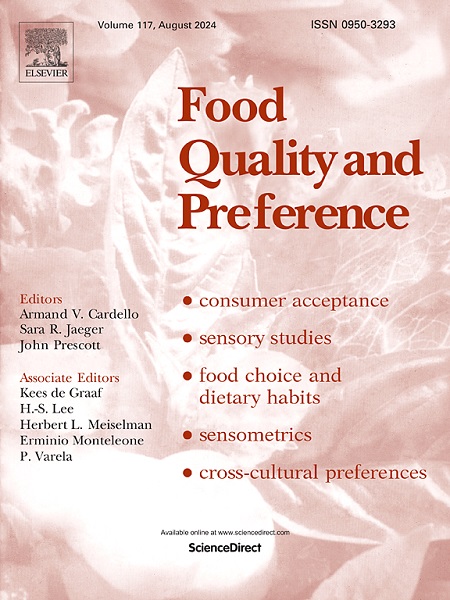Territorial brand equity in the wine market and the role of the organic label: A consumer perspective
IF 4.9
1区 农林科学
Q1 FOOD SCIENCE & TECHNOLOGY
引用次数: 0
Abstract
Organic certification can be a powerful differentiation marketing strategy for wine producers. However, the role of this certification in attracting consumers depends on its synergy with other factors that are associated with and interact alongside it, such as the brand. This study examines consumers' perceptions and purchasing behaviour when the organic label coexists with different levels of territorial brand equity (in our case, Geographical Indication). A 2 (Geographical Indication brand equity: high vs. low) by 2 (organic: organic label vs. no label) between-subjects factorial design experiment was conducted to test the interaction effects of these two dimensions. Data were collected from 412 wine consumers. The results demonstrate that when territorial brand equity is low, the organic label increases consumers' taste perception, perceived quality, and willingness to pay a premium price. In contrast, organic certification does not significantly influence consumer purchase behaviour for high-equity brand wines.
求助全文
约1分钟内获得全文
求助全文
来源期刊

Food Quality and Preference
工程技术-食品科技
CiteScore
10.40
自引率
15.10%
发文量
263
审稿时长
38 days
期刊介绍:
Food Quality and Preference is a journal devoted to sensory, consumer and behavioural research in food and non-food products. It publishes original research, critical reviews, and short communications in sensory and consumer science, and sensometrics. In addition, the journal publishes special invited issues on important timely topics and from relevant conferences. These are aimed at bridging the gap between research and application, bringing together authors and readers in consumer and market research, sensory science, sensometrics and sensory evaluation, nutrition and food choice, as well as food research, product development and sensory quality assurance. Submissions to Food Quality and Preference are limited to papers that include some form of human measurement; papers that are limited to physical/chemical measures or the routine application of sensory, consumer or econometric analysis will not be considered unless they specifically make a novel scientific contribution in line with the journal''s coverage as outlined below.
 求助内容:
求助内容: 应助结果提醒方式:
应助结果提醒方式:


